The 198th Block: Political influencers, content moderation, and digital security
And a short essay on one of my favourite subjects: Injustices by Lysenkoism
This week…
Your reading time is about 14 minutes. Let’s start.
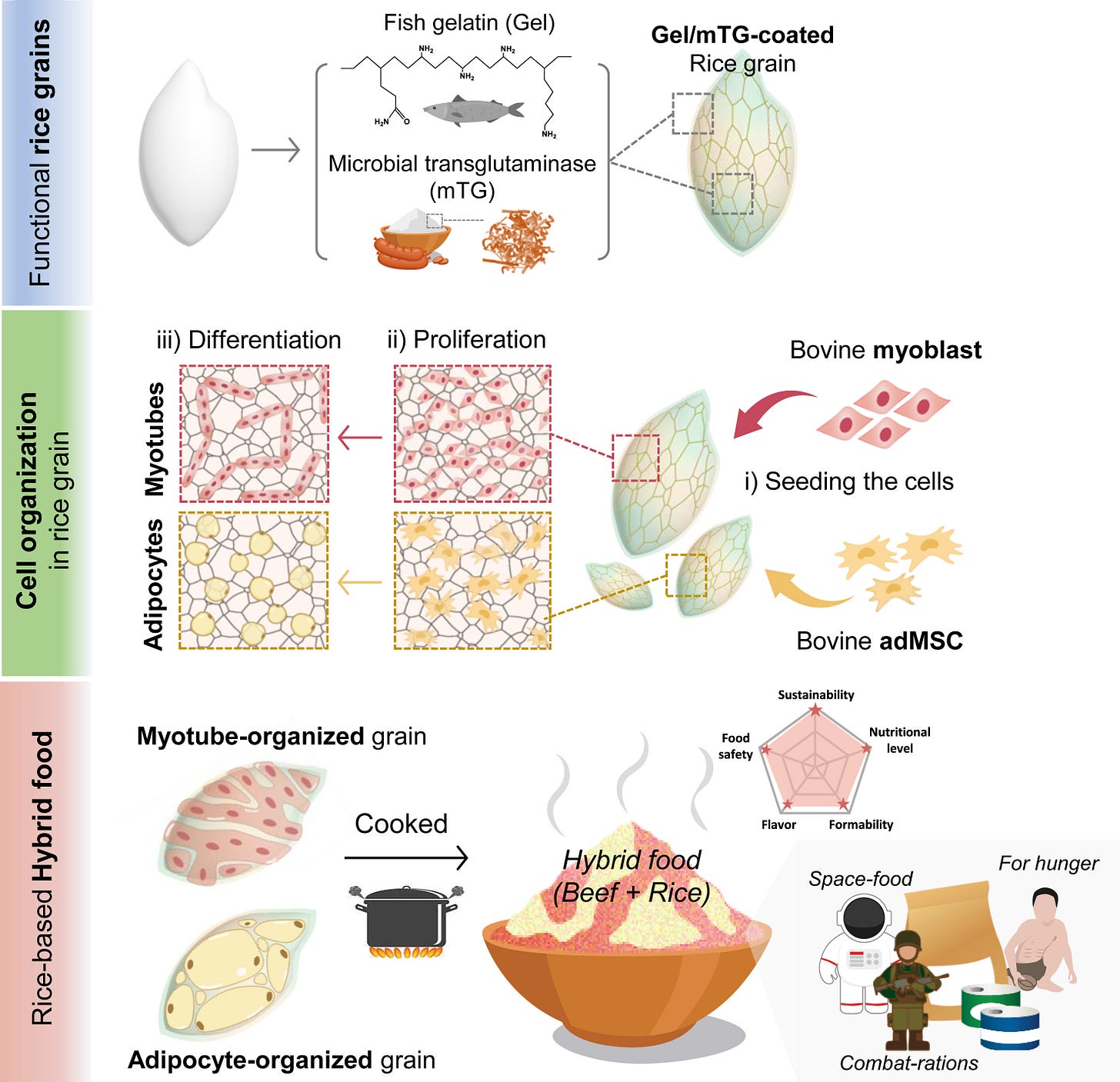
A team at Yonsei University in South Korea published a paper1 on a new hybrid food—a meaty rice that has eight per cent more protein and seven per cent more fat than regular rice. The grains are first coated in fish gelatin, which helps lab-grown beef muscle and fat cells to latch on.
Compared to regular beef, this lab-cultivated hybrid food has a smaller carbon footprint. The scientists say it could serve as a military ration, space food or famine relief. Despite global developments, many populations still struggle to have a diet that meets their caloric and nutritional needs—developed nations included.
The researchers’ desire to address food supply issues reminded me of a story I love to tell: Up until the mid-20th century (that's the 1930s through the 1960s!), some national agricultural policies in the Eastern Bloc rejected natural selection and genetics as pseudoscience, favouring Lamarckism, or more precisely, Lysenkoism, which resulted in tens of millions of deaths due to preventable famine. I remember tweeting about this back in the early years of Twitter, and it was one of my first viral tweets! I shared it because I was a recent biology graduate and I thought more people should know about Nikolai Vavilov.
Vavilov was born in 1887 in Moscow. At a young age, he learned about the poverty his father faced as a result of crop failure and devoted his life to finding a solution. He studied genetics and developed ideas on the centres of origin of cultivated plants.
He reasoned that domestic crops were susceptible to diseases and disasters because they lacked the genetic diversity to withstand hardship. Wild crops, although they didn’t produce great yields, were hardier because they were more diverse. He hypothesised that crossing wild and domesticated species would create new genetic variations that made food crops with reliable yield and hardiness. In the present day, we accept this mainstream concept as plant biodiversity and applied genetics.
Upon graduation, he began travelling to learn from other thinkers, including William Bateson, the English biologist who first described the study of heredity as genetics. Vavilov also went on botanical expeditions and collected seeds around the globe.2 As the head of the Institute of Plant Industry between 1924 and 1936, he managed the world’s largest collection of plant seeds at that time. He had thousands of colleagues who helped build this collection, which also included cultivating them, harvesting the resulting crops, and replenishing the seed supplies.
But this form of modern genetics threatened Joseph Stalin’s ideology of the New Soviet Man.3 It was the 1920s and 1930s, and the Communist Party of the Soviet Union postulated that the New Soviet Man was selfless, learned, healthy, muscular, and enthusiastically communist. These qualities would develop in the New Soviet Man as a positive reflection of post-scarcity and unprecedented scientific developments in the Soviet environment he is surrounded by. In other words, the New Soviet Man can be created, and his environmentally acquired traits can be passed on to his offspring.
The Party, which staunchly stood with the proletariat, also brought working-class men into positions of authority to glorify the average Soviet man—peasants without formal academic training or affiliation to the bourgeois scientific community. One of the men was Trofim Lysenko, who had no science degree or relevant qualification.4 But that’s okay because these men would become the model New Soviet Men. After all, after the Soviet Union confiscated agricultural landholdings from peasant farmers, it was Lysenko who was able to get the dispossessed farmers to return to work by promising year-round work through his revolutionary agricultural methods.
At first, Vavilov followed and encouraged Lysenko’s work. Then, he realised that the latter was a quack. Vavilov became an outspoken Lysenko critic because he believed Lysenko, with his version of Lamarckism, would destroy Soviet agriculture. Lamarckism, named after French zoologist Jean-Baptiste Lamarck, is a theory of heredity where organisms pass on acquired characteristics to offspring. For instance, if you cut the tails of rats, their offspring would be born tailless. (No, they wouldn’t.)
Genes, the basic unit of heredity, were a pseudoscientific concept, according to Lysenkoism. Instead, Lysenko proposed that there is a limitless ability to transform living organisms through environmental changes. This suited the Party’s position on the environmental manufacturing of the New Soviet Man. Lysenko also rejected the concept of random mutations because “science is the enemy of randomness.”5
In modern science, we understand that the nature vs. nurture debate is not that simple. Studies in the fields of epigenetics and somatic hypermutation, for example, showed the possibilities of transgenerational inheritance of acquired traits. However, they are considered a form of limited validity, since they resembled Darwinism rather than Lamarckian evolution. (We’ll not get into the nitty-gritty of it today.) Plus, Lysenko believed that environmentally induced changes are the primary mechanism of heritability, while heritable epigenetic effects are minor and often unstable.6
Applying Lysenkoism to agriculture, Lysenko experimented and proved that if you educate your plants properly, even frost-sensitive plants would survive, nay, thrive in the harsh Soviet winters and produce high yields. (He most definitely fabricated his reports.) Similarly, he believed that if you treat a cow well, you will get more milk. Lysenkoist dairy farmers were said to have cows that were treated far better than other livestock owners—which was great for the cows, and probably the only great thing about Lysenkoism.
Lysenko’s influence grew quickly. By 1940, he was the director of the Institute of Genetics within the USSR’s Academy of Sciences. At this point, pretty much anyone who practised “bourgeois pseudoscience” mainstream genetics was arrested and thrown into jail. That’s what happened to Vavilov. On August 6, 1940, he was captured while on an expedition to Ukraine, no doubt collecting seeds.
Meanwhile, Nazi Germany was invading the Soviet Union. Soviet officials prepared for the Nazi invasion by evacuating their precious art from the city but did not bother to save the 250,000 seeds. While the Soviet Union did not care about the seed bank since they can make miracle crops, the genetics-obsessed Nazi scientists were frothing at the mouth for it.
So, during the siege of Leningrad, a handful of Vavilov’s seed friends barricaded themselves in the seed vault to defend their collection. They had to contend not just with the threat of the Nazis, but the famished people of Leningrad, the starving rats that were holed in with them, and their own hunger.
The people of Leningrad banded together in the first few months of the siege. They tightened their belts and rationed their food. When their food storage emptied, they ate pet food, then their pets. Finally, they resorted to eating anything they could—wallpaper, leather, fur clothes, you name it.7
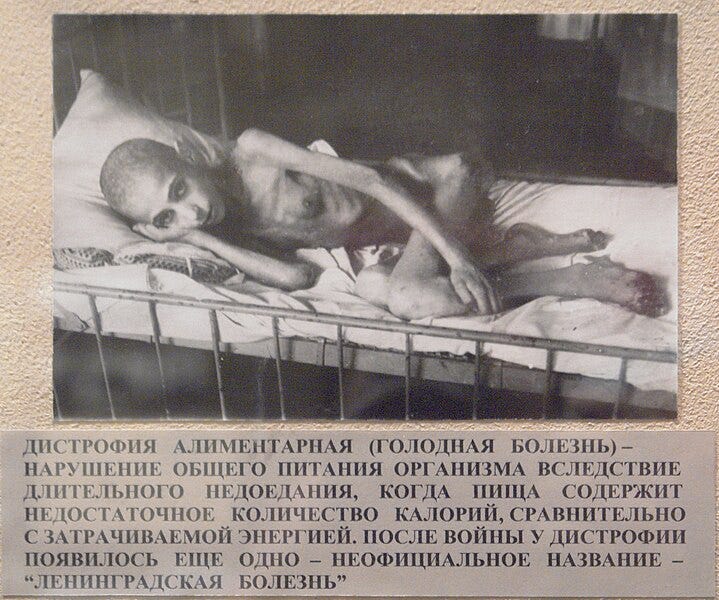
The only food left in the entire city was in Vavilov’s seed bank. But the guarding scientists did not touch the food at all. Like other citizens of Leningrad, they were slowly starving to death too. Yet they protected the collection at all costs—even from themselves. They knew that after the war, the people would need food. And with the crop fields decimated by the war, they would need to grow food. And to do that, they would need seeds.
Slowly, they died—a groundnut scientist, Alexander Stchukin, died at his desk with a pack of peanuts in his hand. Dmitry Ivanov, the rice scientist died with bags of edible rice at his disposal. As did Georgi Kriyer, the herbs expert, and Liliya Rodina, the grain crops expert… You get the picture. At least one survived—the potato expert Vladmir Lekhnovich who lived to document his brave colleagues’ sacrifice. Vavilov himself died in 1943 in prison, from the very thing he was working to end: starvation.
The siege lasted from September 8, 1941, to January 27, 1944. However, the anti-intellectualism of Lysenkoism continued to be the USSR’s agricultural policy for another decade. After the end of Stalin’s rule, Lysenkoism continued under the new leadership of Nikita Khrushchev. At this point, people were a bit braver to voice dissenting views. In 1955, about 300 scientists sent a 22-page memorandum, also known as the Letter of Three Hundred, to Khrushchev highlighting the international shame Lysenko brought to Soviet science.8 It led to Lysenko’s temporary resignation before being reinstated. Soviet scientists continued to publicly criticise Lysenko, and the press soon followed suit, especially after Khrushchev’s dismissal in 1964. Lysenko was finally removed from his position in 1965.
The death of Lysenkoism was painstakingly slow. In fact, the People’s Republic of China under Mao Zedong adopted his method, which resulted in the Great Chinese Famine of 1959 to 1961, killing anywhere between 16.5 to 45 million people.9 Other Eastern Bloc countries also accepted Lysenkoism to some extent, including Poland and Czechoslovakia.
Criticism of elitism in the scientific community is fair and well-founded—there are efforts within the community itself to address this issue. However, in rejecting the bourgeoisness of mainstream science, radical politicians meddled in scientific policies by endorsing any contrarian ideas as long as they were anti-establishment—at the expense of the truth. It would take decades for Vavilov’s posthumous public rehabilitation to take place,10 and then decades longer for the disastrous effects of Lysenkoism to be recognised.
And now, a selection of top stories on my radar, a few personal recommendations, and the chart of the week.
ICYMI: The Previous Block reminded you about personal data protection. CORRECTION NOTICE: None notified.POLITICAL INFLUENCERS
How Narendra Modi became India’s influencer-in-chief
Barkha Dutt for Rest of World:
Move over, YouTube comedians and Instagram models.
The OG of social media influencers in India is now the country’s prime minister, Narendra Modi. At 73, his deft handling of message and medium underscores his online domination. And I don’t mean this in a trivial way.
Politics in India today is deeply digital. The viral photograph, the livestream, the WhatsApp forward, the selfie, the meme, the hashtag — everything is a weapon in the political war, as digitization alters how issues are experienced, debated, and decided on.
And the Modi-led Bharatiya Janata Party (BJP) has mastered this craft, while other parties are still playing catch-up.
Loosely linked:
People are more likely to engage with content that feels like a FaceTime call instead of a newscast: TikTokers’ advice for Joe Biden by Rachel Janfaza for Time.
Why Latin America’s #1 Spanish streamer is Mexico’s president by Diego Mendoza for Semafor.
TikTok to ramp up fight against fake news, covert influence ahead of E.U. elections by Foo Yun Chee for Reuters.
The U.K. paid Albanian, French, and Belgian TikTokers to discourage Channel crossing, expanding into several new countries by Samuel Osborne for Sky News.
Most influencers fail to admit to advertising, EU study shows by Geert De Clercq for Reuters.
CONTENT MODERATION
The most civilised place to look at news online? It might be Reddit
James Ball for CJR:
I wondered whether the fear of the moderators was a little overblown, until I encountered it myself. During the reporting of this story, I looked up how the admins of r/worldnews would prefer to be contacted—using Reddit’s messaging service—and sent a single, very polite message with what I thought were a few mild inquiries. My account was suspended, across all of Reddit, for five days for “harassment.” The notification informed me that “this decision was made without the assistance of automation.”
Loosely linked:
They wanted a tech career. They’re stuck in a TikTok content moderation “sweatshop” by Zuha Siddiqui for Rest of World.
Kenyan courts keep telling Meta to let workers unionise by Jody Ray for Jacobin.
Russian media watchdog investigating Duolingo over ‘LGBT propaganda’ by Ali Condon for Pink News.
The ‘queer.af’ Mastodon instance disappeared because of the Taliban by Wes Davis for The Verge.
DIGITAL SECURITY
French security experts identify Moscow-based disinformation network
Kim Willsher and Lisa O’Carroll for The Guardian:
France’s Viginum agency […] says the online network, which it has named “Portal Kombat”, includes at least 193 sites disseminating pro-Russian propaganda defending the Russian invasion of Ukraine and criticising the government in Kyiv. Much of the disinformation directed through social media sites and messaging apps is targeting those propagating conspiracy theories, it said.
Viginum researchers, who identified and analysed the network between September and December last year, say the mass disinformation campaign can be traced back to Moscow. One pro-Russian channel on the French Telegram mobile and desktop messaging app is publishing “almost continuously” up to nine articles an hour.
Loosely linked:
Poland’s PM says authorities in the previous government widely and illegally used Pegasus spyware by Vanessa Gera for AP.
Australia to ban doxxing after pro-Palestinian activists publish information about hundreds of Jews by Rod McGuirk for AP.
Surveillance by registration: In the Indian state of Uttarakhand, live-in arrangements are regulated under a new law by Shahrukh Alam for The Quint.
Google stops notifying publishers of ‘right to be forgotten’ removals from search results by Alex Hern for The Guardian.
What I read, listen, and watch…
I’m reading Elite Capture: How The Powerful Took Over Identity Politics (& Everything Else) (2022) by Olúfẹ́mi O. Táíwò.
I’m listening to “Mouthful of Fortune,” an episode of The Allusionist by Helen Zaltzman about foods that are particularly lucky to eat at Lunar New Year. This year, I hosted a nine-course feast but later found out I wasn’t supposed to cut off the head of the fish (“Everything must have a beginning and an end.”). I was concerned the head might be too adventurous for the guests as there were only two people who were actual Asians who culturally observed the celebration (one of them is me, who is only part Chinese). I also realised later most of my guests were from cultures where a fish head wouldn’t have been intimidating at all.
I’m watching Nobel Peace Prize laureate Maria Ressa and the Digital Futures Lab director Urvashi Aneja explore how current AI developments impact the Global South on Al Jazeera’s Studio B.
I’m also watching how dark web hate groups groom kids for offline violence on CBC’s The Fifth Estate.
Other curious links, including en español et français:
People do change their beliefs about conspiracy theories—but not often by Matt N. Williams et al. in Scientific Reports.
How journals are fighting back against a wave of questionable images by Nicola Jones for Nature.
Musk’s X sold checkmarks to Hezbollah and other terrorist groups, report says by Jon Brodkin for Ars Technica.
Where are all these journalists going to get a sense of self from now? by Scaachi Koul for Hazlitt.
The text file that runs the Internet by David Pierce for The Verge.
Insulto, sarcasmo y ridiculización: así se agrede a las políticas españolas en la red X por Mª Milagros del Saz Rubio (Universitat Politècnica de València) en The Conversation.
Fría, sucia y colonialista guerra por los datos. Ahora sí son petróleo por Marta Del Amo en Retina.
Comment Mayotte est devenue un territoire d’exception en France pour le droit des étrangers par Aurore Lartigue dans RFI.
L’extrême droite s’impose en Europe par Camille Tavitian dans Le Délit.
Chart of the week
In the run-up to the annual Munich Security Conference, a survey was carried out in 11 of the world’s major economies to capture a sense of different populations’ thoughts on security risks, wrote Anna Fleck for Statista.
And one more thing
When I told you back in #195 about the AfD, Alice Weidel, and #weidelknecht fancams on TikTok, I wasn’t exaggerating.
Park, Sohyeon, et al. ‘Rice Grains Integrated with Animal Cells: A Shortcut to a Sustainable Food System’. Matter, vol. 7, no. 3, 2024, pp. 1292–1313, https://doi.org10.1016/j.matt.2024.01.015.
Crow, J. F. ‘N. I. Vavilov, Martyr to Genetic Truth’. Genetics, vol. 134, no. 1, 1993, pp. 1–4, https://doi.org/10.1093/genetics/134.1.1.
‘New Soviet Man’. Wikipedia, The Free Encyclopedia, 29 Jan. 2024, https://en.wikipedia.org/w/index.php?title=New_Soviet_man&oldid=1200574550.
Caspari, E. W., and R. E. Marshak. ‘The Rise and Fall of Lysenko: Spectacular Successes of Western Biology Initiate a Reorientation of Russian Biology along Western Lines’. Science, vol. 149, no. 3681, 1965, pp. 275–278, https://doi.org/10.1126/science.149.3681.275.
Kolakowski, Leszek. ‘Main Currents of Marxism.’ W. W. Norton & Company, 2005.
Graham, Loren. ‘Lysenko's Ghost: Epigenetics and Russia.’ Harvard University Press, 2016.
‘The Tragedy of the World’s First Seed Bank’. Science History Institute, 28 Sept. 2022, https://sciencehistory.org/stories/magazine/the-tragedy-of-the-worlds-first-seed-bank/.
‘Letter of Three Hundred’. Wikipedia, The Free Encyclopedia, 26 Nov. 2023, https://en.wikipedia.org/w/index.php?title=Letter_of_three_hundred&oldid=1186875348.
Meng, Xin, et al. ‘The Institutional Causes of China’s Great Famine, 1959–1961’. The Review of Economic Studies, vol. 82, no. 4, 2015, pp. 1568–1611, https://doi.org/10.1093/restud/rdv016.
Atz, James W., and Robert J. Winter. ‘Further Steps in the Rehabilitation of N. i. Vavilov’. The Journal of Heredity, vol. 59, no. 5, 1968, pp. 274–275, https://doi.org/10.1093/oxfordjournals.jhered.a107716.



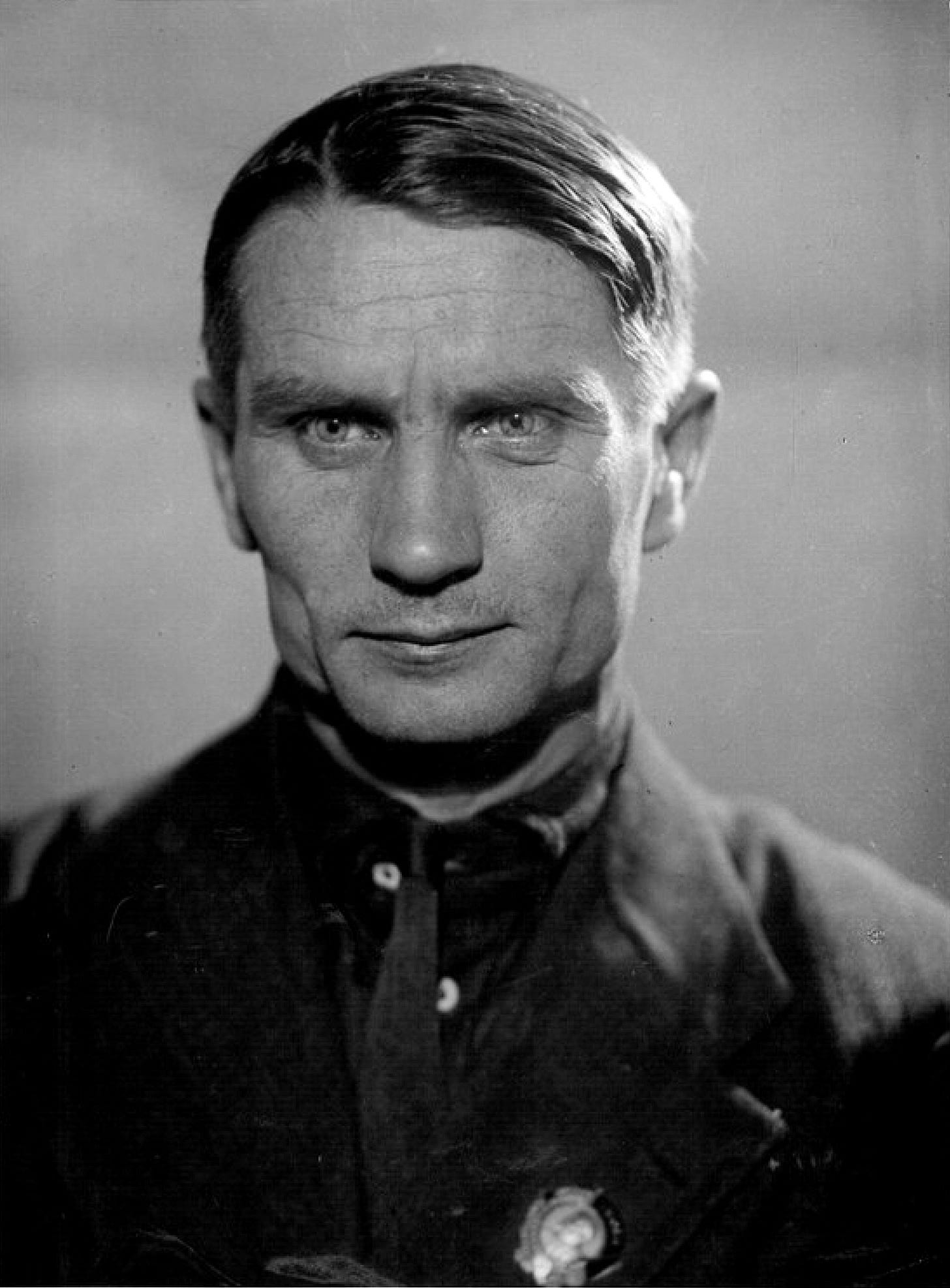
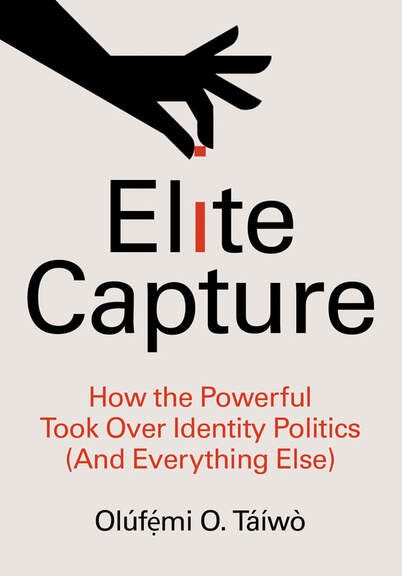
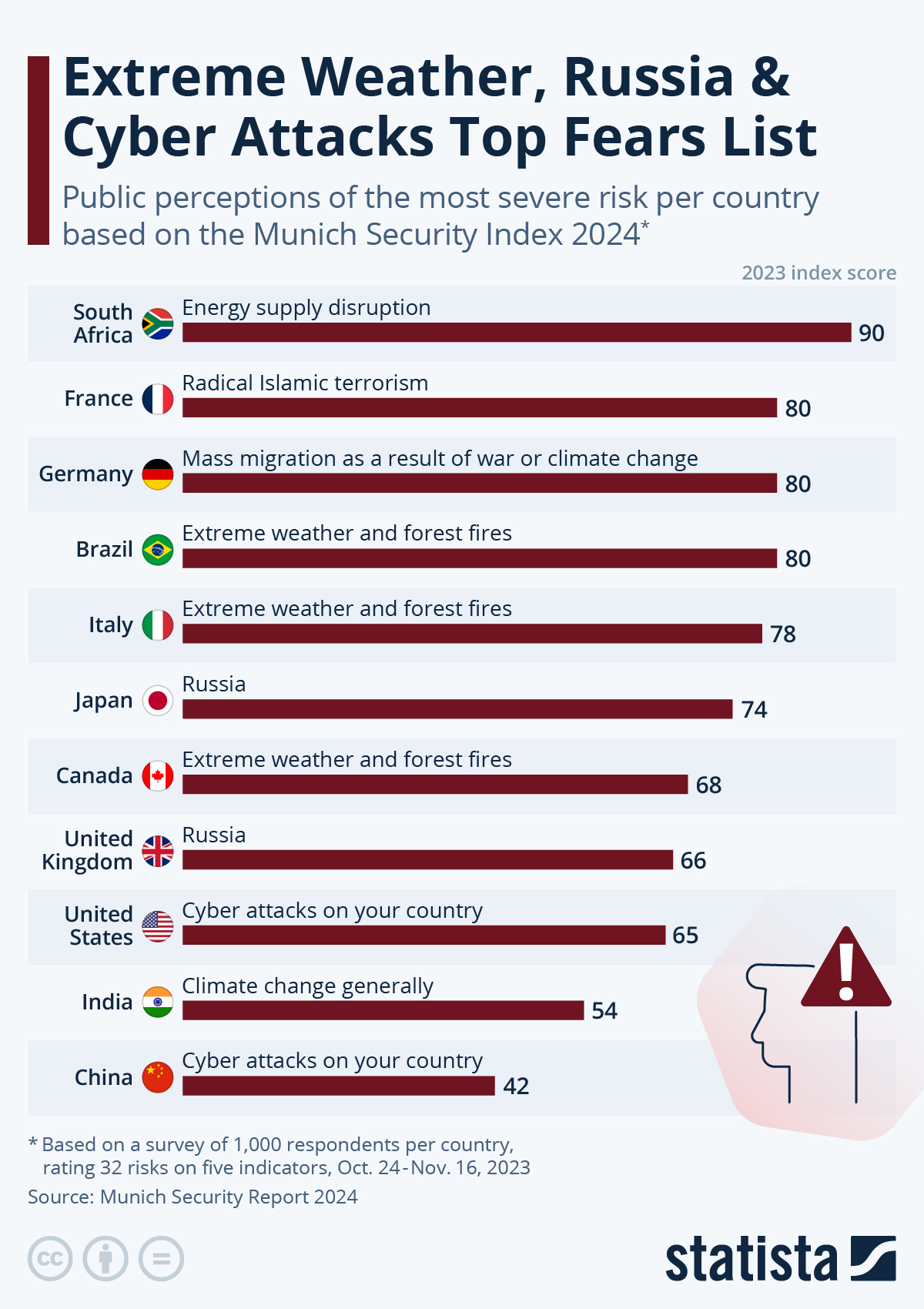

Bravo!